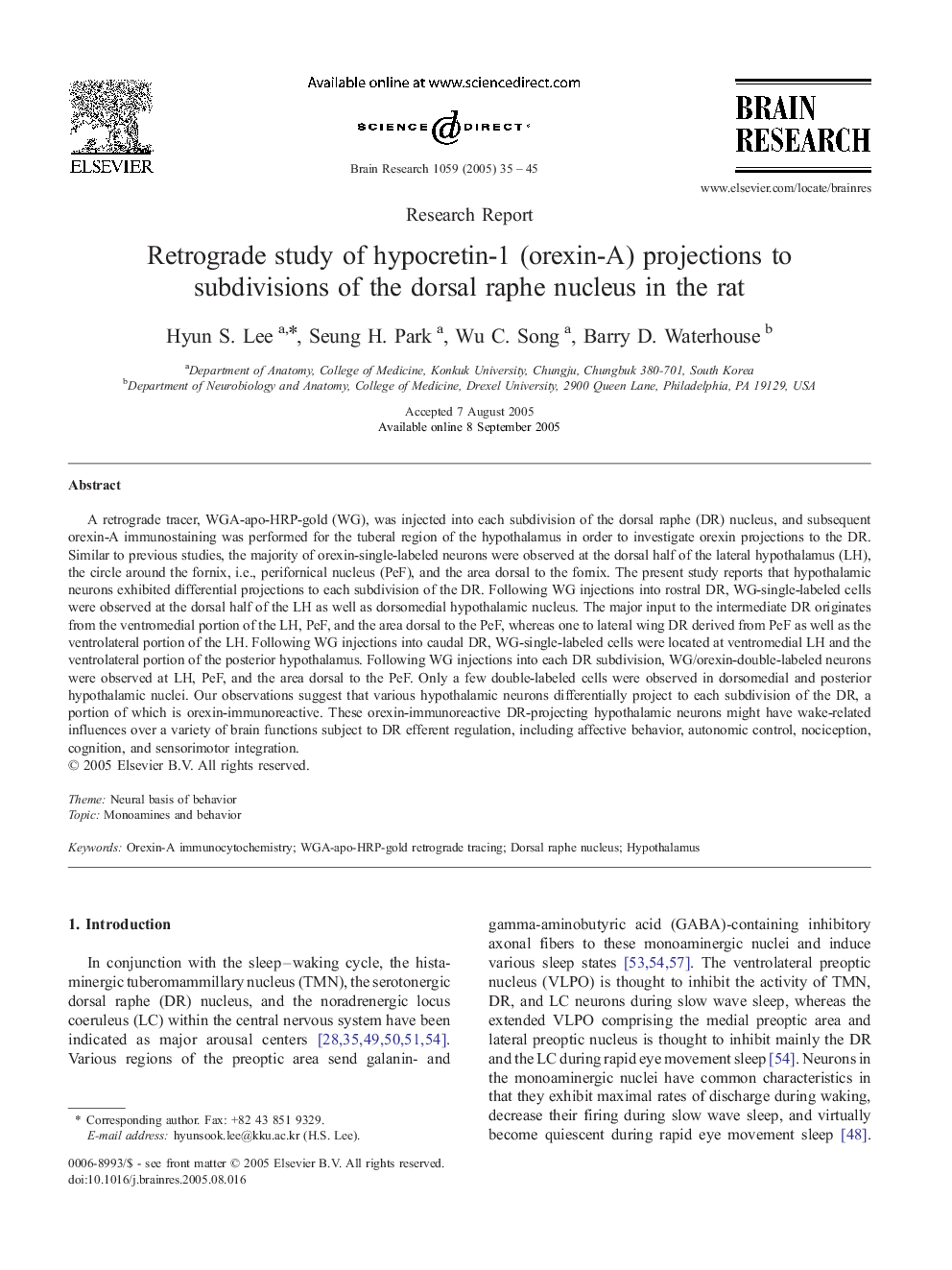| Article ID | Journal | Published Year | Pages | File Type |
|---|---|---|---|---|
| 9415841 | Brain Research | 2005 | 11 Pages |
Abstract
A retrograde tracer, WGA-apo-HRP-gold (WG), was injected into each subdivision of the dorsal raphe (DR) nucleus, and subsequent orexin-A immunostaining was performed for the tuberal region of the hypothalamus in order to investigate orexin projections to the DR. Similar to previous studies, the majority of orexin-single-labeled neurons were observed at the dorsal half of the lateral hypothalamus (LH), the circle around the fornix, i.e., perifornical nucleus (PeF), and the area dorsal to the fornix. The present study reports that hypothalamic neurons exhibited differential projections to each subdivision of the DR. Following WG injections into rostral DR, WG-single-labeled cells were observed at the dorsal half of the LH as well as dorsomedial hypothalamic nucleus. The major input to the intermediate DR originates from the ventromedial portion of the LH, PeF, and the area dorsal to the PeF, whereas one to lateral wing DR derived from PeF as well as the ventrolateral portion of the LH. Following WG injections into caudal DR, WG-single-labeled cells were located at ventromedial LH and the ventrolateral portion of the posterior hypothalamus. Following WG injections into each DR subdivision, WG/orexin-double-labeled neurons were observed at LH, PeF, and the area dorsal to the PeF. Only a few double-labeled cells were observed in dorsomedial and posterior hypothalamic nuclei. Our observations suggest that various hypothalamic neurons differentially project to each subdivision of the DR, a portion of which is orexin-immunoreactive. These orexin-immunoreactive DR-projecting hypothalamic neurons might have wake-related influences over a variety of brain functions subject to DR efferent regulation, including affective behavior, autonomic control, nociception, cognition, and sensorimotor integration.
Related Topics
Life Sciences
Neuroscience
Neuroscience (General)
Authors
Hyun S. Lee, Seung H. Park, Wu C. Song, Barry D. Waterhouse,
